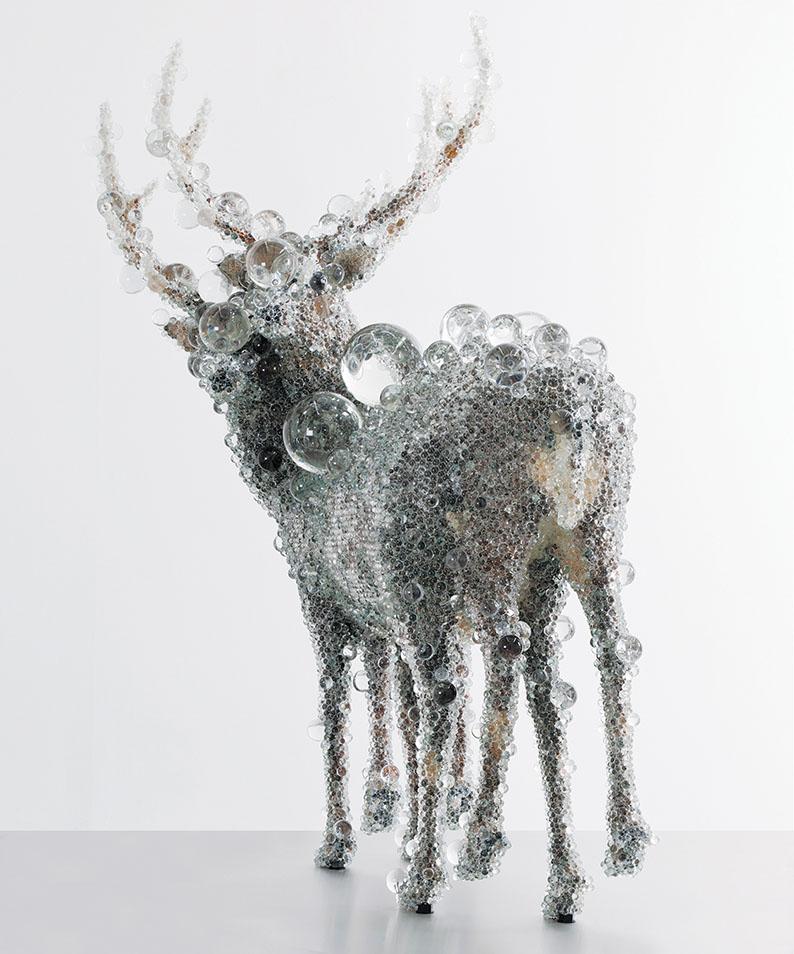CHRONICLING THE art of the Heisei era, which commenced in 1989 with the ascension of Emperor Akihito, this exhibition features major works by artists including Yayoi Kusama, Takashi Murakami, Yasumasa Morimura, Daido Moriyama, Yoshitomo Nara, Hiroshi Sugimoto and Yukinori Yanagi. The era coincides with the peak of the Japanese economic boom and its later contraction, which led to the ‘lost decades’ of the 1990s and 2000s, but also the rise of Japan as a cultural superpower. This exhibition of Japanese Art After 1989 is currently on show in Australia.
QAGOMA’s Collection of Contemporary Japanese Art
Increasingly cosmopolitan in character and operating with an unprecedented level of international mobility, the art of this period offers a sophisticated reflection on the social conditions behind art’s production in Japan and the anxieties that accompany them.
The Queensland Art Gallery of Modern Art’s (QAGOMA) collection of contemporary Japanese art is the most extensive in Australia and is well positioned to explore this creative period, looking at various aspects of culture and society in Japan through the work of its leading artists.
Over 40 Artists on Show
The exhibition is in two-parts, with the first stage of more than 100 works by over 40 artists, which opened in September and runs into December, and the second stage opening in mid-December and runs until September 2015. Highlights of the first instalment of the exhibition include works such as Takahiro Iwasaki’s floating wooden temple Reflection Model (Perfect Bliss) (2010-12), the newly acquired manga-inspired monumental woodblock print Nonhuman Crossing (2013) by Sachiko Kazama and Chim Pom’s video KI-AI 100 (2011) of their intervention at the site of the Great Sendai Earthquake of March 2011.
Starting in December, the second stage features popular and well-known works such as Kohei Nawa’s glass bauble-encrusted PixCell-Double Deer #4 (2010), Yayoi Kusama’s immersive mirror installation Flowers that Bloom at Midnight (2011), and an early incarnation of Takashi Murakami’s iconic Mr DOB character, And then, and then and then and then and then, from 1994.
Art of the Heisei Era
The exhibition’s survey of the art of Heisei, the current era in the Japanese imperial calendar, looks at the significant challenges experienced by Japan in this period, as the country has negotiated the collapse of the ‘bubble’ economy and a social uncertainty exacerbated by a series of man-made and natural disasters within a rapidly changing region. But it has also been the period of ‘Cool Japan’, with widespread international interest in Japan’s contemporary cultural production, while opportunities have emerged for closer engagement with its neighbours in the Asia Pacific. (www.beicy.com)
As well as 25 years of Heisei, 2014 also marks 25 years of the gallery’s public engagement with the contemporary art of Japan through the landmark 1989 exhibition Japanese Ways, Western Means, the Asia Pacific Triennial of Contemporary Art series, and other exhibitions, along with the development of a significant collection of works by some of the period’s most important artists.
We Can Make Another Future draws on the specific composition of the gallery’s collection to propose several overlapping frameworks for considering this fascinating period in Japanese history through the art of an extraordinary time. The show also explores the emergence of an aesthetic of the digital sublime; responses to the rich field of consumer culture and new technologies of representation and communication; and critiques of national and sexual identity, which through figuration and performance attest to the central role of the human body in contemporary social life.
We Can Make Another Future, until 20 September 2015 at the Queensland Art Gallery of Modern Art, Brisbane, www.qagoma.qld.gov.au.
The catalogue includes essays by QAGOMA curator Reuben Keehan and Japanese curator Shihoko Iida, as well as a detailed chronology spanning 25 years of Japanese art in the context of wider culture and society.
Running concurrently is Future Beauty: 30 Years of Japanese Fashion, a comprehensive survey of over 100 garments and accessories, curated by the fashion historian Akiko Fukai, from 1 November 2014 to 15 February, 2015.

